Content will always be king, we know that will never change. But there are plenty of new trends and developments shaping content marketing as we wind up 2019, and look toward a new year. These are some of the directions, ideas and trends in content marketing that we think are key for 2020.
Consider creating more content for further down the funnel
What types of content are most prevalent for B2B? According to the “B2B Content Marketing Benchmarks, Budgets, and Trends—North America”[i] study, B2B marketers are creating a lot of content for the top of the funnel, but not so much for the later stages in the buyer’s journey. Creating brand awareness, educating audiences and building credibility and trust – all top-of-the-funnel activities – were cited as the top goals by the B2B marketers surveyed.
But content marketing can also deliver on goals related to activities that take place further down in the funnel, such as strengthening relationships with existing customers, building subscriber lists and closing sales deals, for example. Savvy marketers in 2020 will put the focus on activities that take place deeper in the funnel, and use targeted content to “seal the deal” and maximize content marketing ROI.
Provide information, don’t “sell”
B2B prospects need a lot of information, no matter where they are in the funnel. Now, more than ever, it’s critical to provide information that is relevant and useful for each stage in the buyer’s journey. The best content starts from the point-of-view of your prospects, and is aligned with their information needs – not your sales messaging. The goal is to build credibility and trust, and then gently direct your prospects toward your solutions. If they feel like they’re being pushed, with a hard sell or a biased opinion, you’ll lose your status as a trusted authority. In 2020, organizations need to be seen as transparent and trustworthy, so make sure your content features the right tone and unbiased facts.
Google and E.A.T.
It’s not just your prospects who prefer information that is relevant, credible and trustworthy. Google searches for web pages that provide a high level of “Expertise, Authority and Trustworthiness,” and ranks those pages higher. These are some of the ways you can boost the E.A.T. (and SEO) of your web pages:
- Include information on the author of an article on your page, including their credentials (in an author box, for example). Google’s algorithms will find the author on other websites, and this will boost credibility and ranking.
- Link to the sources of information used in the article. Google will verify the links and sources, bumping up your credibility. It also helps if websites link to you.
- Have a Wikipedia page. This isn’t always possible for smaller organizations, but it is believed (by the experts who analyze and decipher Google’s algorithms) that it helps to boost SEO.
- Get your content shared as widely as possible, to strengthen your ranking as an authority.
The power of micro content
When it comes to B2B content, we tend to think long-form – white papers, reference cases, product sheets, etc. A lot of the time, it simply takes more words to tell the story of a complex product or solution. But we don’t always have to tell the entire story. Sometimes, a bite-sized nugget of information is just as compelling as a longer version. (And in the distraction age, sometimes your audience only has time for a single bite.)
Micro content includes micro video and micro blogs, or a captioned image. Think the length of a Tweet (max. 280 characters), or a TikTok video (usually 15 seconds). Types of content that work well for micro formats include customer testimonials; new product announcements; new product features; or even new customer signings. For any of these, a short video statement, or a caption with an image, or even a Tweet would deliver the message right to your audiences, without taking much of their time.
Another advantage is that you can easily turn long-form content into multiple pieces of micro content. If you are already using a modular approach in your content development, you’re ahead of the game.
Want to know more?
If you’d like to learn more about micro content, expanding the types of content you offer, or boosting the SEO (and ROI) of your content, we can help. We specialize in helping organizations reach their marketing and communications goals. We’d be glad to talk about your marketing goals, and challenges. Contact us at info@livingstone.eu
Check out the other blogposts in our series looking ahead to 2020: B2B digital marketing trends: what’s hot for 2020; and B2B marketing trends to watch in 2020.
[i] Content Marketing Institute, MarketingProfs, Sitecore, “B2B Content Marketing Benchmarks, Budgets, and Trends—North America,” retrieved from: https://contentmarketinginstitute.com/wp-content/uploads/2019/10/2020_B2B_Research_Final.pdf



